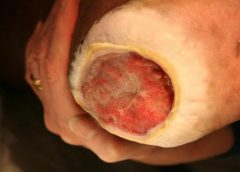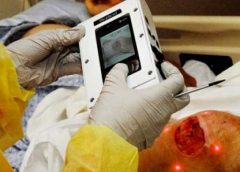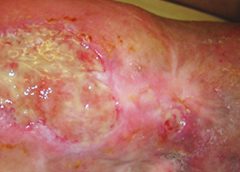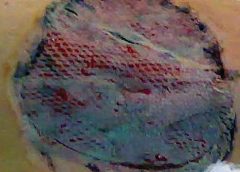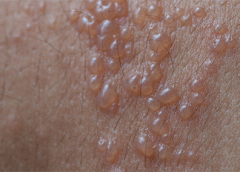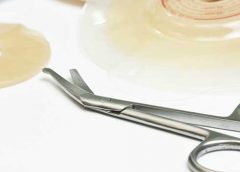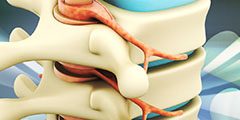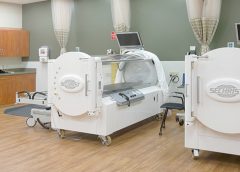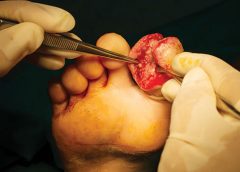Abstract: Background. The evaluation and treatment of heel pressure injuries are a significant and expensive sequela of the aging population. Although the workup of patients with lower extremity tissue loss usually involves an assessment of the arterial blood flow by means of noninvasive vascular testing, the results may be misleading in patients with heel pressure injuries when the ankle-brachial index (ABI) does not provide direct information about perfusion of the rearfoot. The objective of this retrospective, observational investigation was to determine if noninvasive vascular testing provides accurate and reliable results in patients with heel pressure injuries. (more…)
Read MoreSearch Results for: EN
Wound Photography – How it Benefits Clinical Documentation
Accurate assessment and documentation of wounds is essential for developing a comprehensive plan of care. Photography now plays a key role in wound care. The use of digital photography has enhanced the reliability and accuracy of wound documentation. Though a wound assessment in patient files includes details such as location, depth, odor, condition of surrounding tissue and other details, a visual record can be worth even more.
Digital photography is becoming a more prevalent documentation tool. According to an article published in McKnight’s, forensic nursing experts recommend using photographs to document injury. The photos show both how an injury occurred and how it is healing.
The National Pressure Ulcer Advisory Panel (NPUAP) also supports photography as a more accurate means for assessment of wound dimensions and wound base over time.
A visual confirmation to the written record, these images:
- Facilitate better diagnosis
- Enhance clinical documentation
- Help to monitor the progress of wound healing
- Help prevent litigation in wound management
- Allow inter-disciplinary communication among the wound care team
Read more at Wound Wizard
Read MoreManagement of Patients With Venous Leg Ulcers
It is well documented that the prevalence of venous leg ulcers (VLUs) is increasing, coinciding with an ageing population. Accurate global prevalence of VLUs is difficult to estimate due to the range of methodologies used in studies and accuracy of reporting.1 Venous ulceration is the most common type of leg ulceration and a significant clinical problem, affecting approximately 1% of the population and 3% of people over 80 years of age2 in westernised countries. Moreover, the global prevalence of VLUs is predicted to escalate dramatically, as people are living longer, often with multiple comorbidities. Recent figures on the prevalence of VLUs are based on a small number of studies, conducted in Western countries, and the evidence is weak. However, it is estimated that 93% of VLUs will heal in 12 months, and 7% remain unhealed after five years.3 Furthermore, the recurrence rate within 3 months after wound closure is as high as 70%.4-6 Thus, cost-effective adjunct evidence-based treatment strategies and services are needed to help prevent these ulcers, facilitate healing when they occur and prevent recurrence.
The impact of a VLU represents social, personal, financial and psychological costs on the individual and further economic drain on the health-care system. This brings the challenge of providing a standardised leg ulcer service which delivers evidence-based treatment for the patient and their ulcer. It is recognised there are variations in practice and barriers preventing the implementation of best practice. There are patients not receiving appropriate and timely treatment in the initial development of VLUs, effective management of their VLU and preventing recurrence once the VLU has healed.
Health-care professionals (HCPs) and organisations must have confidence in the development process of clinical practice guidelines and have ownership of these guidelines to ensure those of the highest quality guide their practice. These systematic judgments can assist in policy development, and decision making, improve communication, reduce errors and improve patient outcomes.
Read more at Journal of Wound Care
Read MoreSkin substitutes: Understanding product differences
Skin substitutes (also called tissuebased products and dermal replacements) are a boon to chronic wound management when traditional therapies have failed. When selecting skin substitutes for their formularies, wound care professionals have many product options—and many decisions to make.
Repair of skin defects has been a pressing concern for centuries. As early as the 15th century BC, Egyptian physicians chronicled procedures and herbal treatments to heal wounds, including xenografts (skin from another species). The practice of applying allografts (human cadaver skin) to wounds was first documented in 1503. In 1871, autologous skin grafting (skin harvested from the the person with the wound) was tried. Next came epithelial- cell seeding, which involves scraping off the superficial epithelium of healthy skin and transplanting the cells onto the wound. (more…)
Read MoreFrequently asked questions about support surfaces
The National Pressure Ulcer Advisory Panel (NPUAP) describes support surfaces as “specialized devices for pressure redistribution designed for management of tissue loads, microclimate, and/or other therapeutic functions.” These devices include specialized mattresses, mattress overlays, chair cushions, and pads used on transport stretchers, operating room (OR) tables, examination or procedure tables, and gurneys. Some support surfaces are part of an integrated bed system, which combines the bed frame and support surface into a single unit. (more…)
Read MoreHerpes zoster: Understanding the disease, its treatment, and prevention
Herpes zoster (HZ, also called shingles) is a painful condition that produces a maculopapular and vesicular rash. Usually, the rash appears along a single dermatome (band) around one side of the body or face.
In most cases, pain, tingling, burning, or itching occurs a few days before the rash. Next, blisters form, scabbing over in 7 to 10 days. In rare cases, the rash is widespread, resembling varicella zoster (VZ, or chickenpox) rash. Pain can range from mild to severe and may be dull, burning, or gnawing. It may last weeks, months, or even years after the blisters heal. Shingles on the face may impair vision or hearing. (more…)
Read MoreKnowing when to ask for help
As a wound care expert, you’re probably consulted for every eruption, scrape, and opening in a patient’s skin. Occasionally during a patient assessment, you may scratch your head and ask yourself, “What is this? I’ve never seen anything like it.”
Most wound care experts want to help heal everyone, and most of us love a challenge. But when should we step back and consider referring the patient to another clinician? (more…)
Read MoreOstomy documentation tips
General characteristics
Document if the diversion is an intestinal or urinary ostomy, whether it’s temporary or permanent, and the location— abdominal quadrant, skin fold, umbilicus. (See Descriptor reference.) (more…)
Read MoreClinical Notes: Healing SCI Patients, antiseptics on mahout, diabetes
Electrical stimulation and pressure ulcer healing in SCI patients
A systematic review of eight clinical trials of 517 patients with spinal cord injury (SCI) and at least one pressure ulcer indicates that electrical stimulation increases the healing rate of pressure ulcers. Wounds with electrodes overlaying the wound bed seem to have faster pressureulcer healing than wounds with electrodes placed on intact skin around the ulcer. (more…)
Read MoreHyperbaric oxygen therapy as adjunct therapy for wound care
Why would a patient with a wound spend almost 2 hours a day, 5 days a week, in a locked chamber receiving 100% oxygen? The answer is that medical grade hyperbaric oxygen therapy (HBOT) can be a valuable adjunct therapy for selected types of wounds.
In this article, I’ll focus on hospitals and clinics that follow guidelines from the Undersea & Hyperbaric Medical Society as I give you a brief overview of how HBOT works and its use in wound care. (more…)
Practicing emotional intelligence may help reduce lateral violence
It’s been a stressful day at work—nothing new. One confused patient pulled off her ostomy bag, you’re having difficulties applying negative-pressure wound therapy on another, and a third patient’s family is
angry with you. We all experience stressful days, but unfortunately, sometimes we take our stress out on each other. Too often, this ineffective way of identifying and managing stress leads nurses to engage in lateral violence. (more…)
Read MoreWho can perform sharp wound debridement?
Nurses and therapists often wonder if their license permits them to perform sharp wound debridement. Scope of practice varies significantly from state to state, so it’s imperative to check your state for specific guidance, but we can address some of the challenges clinicians face in deciding whether they can perform this valuable service for patients.

